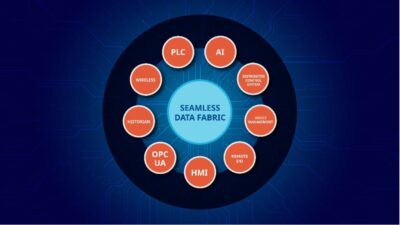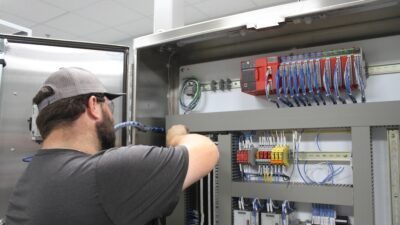Migration from old to new distributed control systems (DCS) can be achieved in a risk-free and pain-free way.

Distributed control system (DCS) insights
-
Modernization of a DCS requires significant justification, planning and execution expertise. Common constraints include space, time and budget.
-
One way to reduce engineering time and project risk is to move away from traditional project engineering and to use tools that enable the project engineering stage to be digitized instead.
-
Digital software can be used to identify existing control functions and map these with modern implementations in the new DCS.
Although obsolescence, a lack of replacement parts and costly system maintenance are the principal reasons for the replacement of a legacy distributed control systems (DCS), the implementation of a modern DCS and/or safety instrumented system (SIS) will create the opportunity to make step-change improvements in plant efficiency, safety, throughput and profitability. Applying newer technologies that are unavailable with legacy systems – such as adaptive, state-based and advanced process control, process learning, automated situational handling, single button restarts, high-performance machine interfaces and secure remote access – can all help provide a competitive edge for the user.
Modernization of a DCS, however, does require significant justification, planning and execution expertise. Managing project risk requires early planning, technical ingenuity and key stakeholder involvement. By tackling the project in phases – from defining the scope to starting up –modernization teams can compartmentalize the risks involved.”
Typically, there are three major constraints: space, time and budget. It is important to evaluate whether new cabinets fit into existing rack rooms and to determine how 30-year-old wiring practices can be reconciled efficiently and cost-effectively.
How does the outdated field and cabinet wiring documentation compare to the ‘as-found’ instruments and marshalling systems? What is the cutover strategy? If shutdowns are required, what is the shortest length of time to complete the cutover to the new DCS and return to production? How much scope is possible within budget? Early planning can assist with technology, project scoping and execution decisions that affect all three of these areas.
Reducing risk
One way to reduce engineering time and project risk is to move away from traditional project engineering and to use tools that enable the project engineering stage to be digitized. This can dramatically reduce time, minimize errors and enable best practices that drive optimized plant performance.
Digital technologies make the transition possible without the need to completely overhaul the existing automation equipment infrastructure. With no rip-and-replace required, this helps to preserve the existing I/O infrastructure investment and simplify migration in gradual, manageable steps. This reduces project risk and minimizes interruption to manufacturing.
Historically, traditional modernization projects have consisted of manual workflows, with a high potential for errors that are very costly to fix later in the project. To address this, Emerson has developed an advanced machine learning tool which is able to manage the transition of legacy applications.
This software can be used to identify existing control functions and map these with modern implementations in the new DCS. It scans the legacy control system code and generates a comprehensive project report, showing how much of the existing code conversion has the potential to be automated, how much must be built by hand, and how much will require re-engineering. These metrics support project budgeting and phasing and help to prevent late-stage surprises.
The process delivers fully integrated digital workflows that eliminate errors. It can provide automatic conversion of up to 70% of the configuration, eliminating work and streamlining project processes. An artificial intelligence (AI) engine compares the legacy control system configuration to a library of Emerson’s previous projects. Matched information from similar projects is extracted into a standardized digital format, eliminating the need for engineers to spend time manually parsing files and building a new system database. The solution automatically transforms the matched information and builds an optimized, fully tested and documented control system database.”
– This originally appeared on Control Engineering Europe.


